The angelfish, scientifically known as Pterophyllum scalare, belongs to the Cichlidae family and is one of the most beloved aquarium fish worldwide. This is a large, gluttonous fish that feeds on fish juveniles and prawns, even though it is rather good-looking and has quite an interesting behavior. It is large with high and flattened from sides body of rather varied coloring – all these made angelfish one of the most spread and popular fishes among aquarists. However, it’s important to note that some fish may be more aggressive or territorial, so it’s crucial to choose tankmates carefully. Proper care, suitable tank conditions, and a balanced diet are essential for keeping fish healthy and thriving.
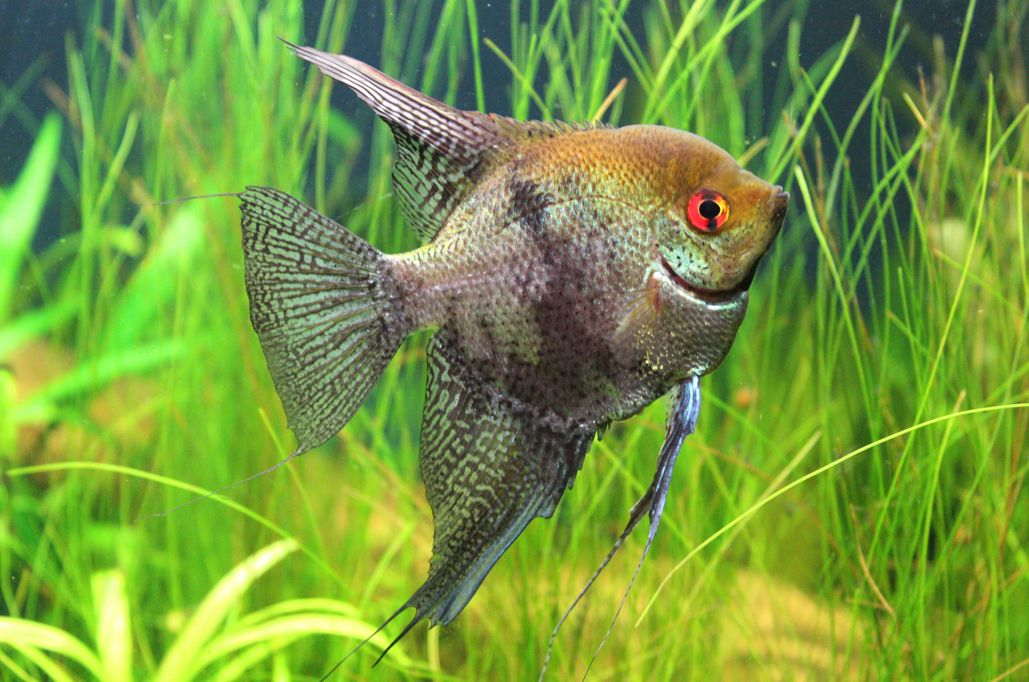
Contents
History
Pterophyllum kind got its name from the Australian zoologist Johann Jakob Heckel (23 January 1790 – 1 March 1857) in 1840. The name origins from the Greek ‘πτερος’ — «a wing,» and ‘φυλλον’ — «a leave» which literally means ‘a wingy leave.’
However, before Heckel, an Pterophyllum scalare was described by two zoologists: Martin Hinrich Carl Lichtenstein (1780 – 1857) and Georges Cuvier (1769 – 1832), in 1823 and 1839 correspondingly. They gave it a specific name of scalaris, but they didn’t finally define its generic assignment, which required a closer definition.
Heckel also deserves credit for defining angelfish as a new separate genus that consists of one kind — Pterophyllum scalaris. After revision in 1862, the generic name remained unchanged, but the kind name’s ending was changed from «scalaris» to «scalare» according to Latin language rules.
Later two more species were added there — Pterophyllum leopoldi and Pterophyllum altum. But the scientists didn’t stop at this stage, they continue working on it, and according to the estimates of some ichthyologists, the kind should consist of a larger number of kinds.
In English, the fish got the name «Angelfishes» due to its tall fins. In German, they are called «Segelflosser» (formed from the word «segel» that means a sail). In Spanish it is Peces ángel or Escalares.
Fish was introduced to a wide audience in 1911. They were bred in Germany in 1914 on the threshold of World War I. Those days it was very expensive, and the breeding technologies were kept in strict confidence. Only several years later, aquarists in the West mastered the breeding technology.
After this, they started selective breeding programs since the fish’s growing popularity required new shapes and colors. This line breeding became so extensive that now the wide variety of breeds created are taken for granted by many.
Habitat in the wild
Pterophyllum scalare is a tropical freshwater fish. It prefers waters with a slow flow in South America: in the Amazon river central basin and its tributaries in Peru, Brazil, and Colombia and surrounding areas. Fish inhabit the Amazon River basin, which is the largest river basin in the world. This vast and diverse ecosystem includes numerous interconnected rivers, tributaries, and flooded areas, creating a complex network of habitats for various aquatic species.
In the wild, it inhabits thickly planted areas, where they feed on fish juveniles, insects, spineless species, and plants. Angelfish are primarily found in slow-moving or still waters, such as calm stretches of rivers and quiet pools. They are adapted to these relatively calm environments and are not typically found in fast-flowing or turbulent waters.
The natural habitat of fish is often characterized by dense vegetation, including submerged plants, floating plants, and marginal vegetation along the riverbanks. These plants provide cover, hiding spots, and spawning sites for the angelfish. Additionally, fallen branches, tree roots, and other submerged structures create additional hiding places and territories for the fish. The fish flattened body shape allows it to swim in thick aquatic vegetation and its dark vertical stripes make them less visible for predators. In the wild, fish normally live in small schools.
Ponds, where they dwell, have warm, soft, and slightly acidic water. Angelfish are typically found in warm, tropical waters with specific water parameters. They prefer slightly acidic to neutral water conditions, with a pH range of around 6.5 to 7.5. The water temperature in their natural habitat ranges from 75°F to 82°F (24°C to 28°C).
Description
In the wild, Pterophyllum scalare have a silvery body flattened from sides with dark stripes, large fins, and sharpened head shape. Reproductive fish fluke may have some long thin rays. Such fin shape helps the fish to hide among plant roots and leaves. For the same reason, in the wild, it has vertical dark stripes on its body.
Angelfish have a laterally compressed body shape, which means they are flattened from side to side. Their bodies are triangular, tapering towards the back, and they have a slightly curved ventral profile. One of the most striking features of fish is their flowing finnage. They possess long, elongated dorsal and anal fins that add to their elegant appearance. The caudal fin (tail fin) is also elongated, creating a beautiful trailing effect as they swim.
However, it’s a rather difficult task to describe angelfish that are on sale nowadays. As a result of line breeding made by amateurs, a huge number of angelfish color variations were obtained – from golden to black.
Size
The adult Pterophyllum scalare species grow to be 6 in (15 cm) long and about 10 in (25 cm) tall. Adult fish maximum height of about 6 inches (15 cm), excluding their fins. The fins, including the elongated dorsal and anal fins, can add an additional 4 to 6 inches (10 to 15 cm) to their total length.
Lifespan
The lifespan can vary depending on several factors, including genetics, diet, water quality, and overall care. On average, angelfish have a lifespan of about 8 to 10 years in captivity.
It’s important to note that lifespan can be influenced by various factors. Providing a suitable environment with clean water, maintaining appropriate temperature and water parameters, offering a balanced diet, and avoiding stressors can contribute to a healthier and longer lifespan for angelfish.
Genetics play a significant role in their lifespan as well. Certain genetic lines may be more prone to health issues, leading to shorter lifespans, while others can live longer if given the right care.
Grow rate
During the first few months of their lives, fish go through a rapid growth phase. At this stage, they can grow about half an inch (1.3 cm) per month. However, as they mature, their growth rate slows down. From around 6 to 12 months of age, angelfish typically grow at a rate of about 0.25 inches (0.6 cm) per month.
Once fish reach adulthood, their growth rate further slows down, and they may only grow around 0.1 to 0.2 inches (0.25 to 0.5 cm) per month. It’s important to note that these growth rates are approximate and can vary between individual fish.
| Characteristic | Description |
|---|---|
| Common Name | Angelfish |
| Scientific Name | Pterophyllum scalare |
| Native Region | Amazon River basin in South America (Brazil, Peru, Colombia) |
| Size | Up to 6 inches (15 cm) in height, excluding fins |
| Body Shape | Triangular, laterally compressed |
| Fin Structure | Elongated dorsal and anal fins, flowing finnage |
| Coloration | Varies greatly, silver, black, white, with stripes or marbling |
| Temperament | Generally peaceful, but can be territorial during breeding |
| Preferred Water Parameters | Temperature: 75°F to 82°F (24°C to 28°C) |
| pH: 6.5 to 7.5 | |
| Habitat | Slow-moving waters like rivers, streams, and flooded forests |
| Preferred Water Conditions | Slightly acidic to neutral water conditions |
| Diet | Omnivorous, accepts high-quality flakes, pellets, and live/frozen foods |
| Breeding Behavior | Monogamous pairs, egg layers, protect and care for fry |
| Suitable Tank Size | Minimum 20 gallons (75 liters) for a pair of angelfish |
| Tank Setup | Tall tank with vertical swimming space, plants, hiding spots |
| Lifespan | Typically 8 to 10 years in captivity |
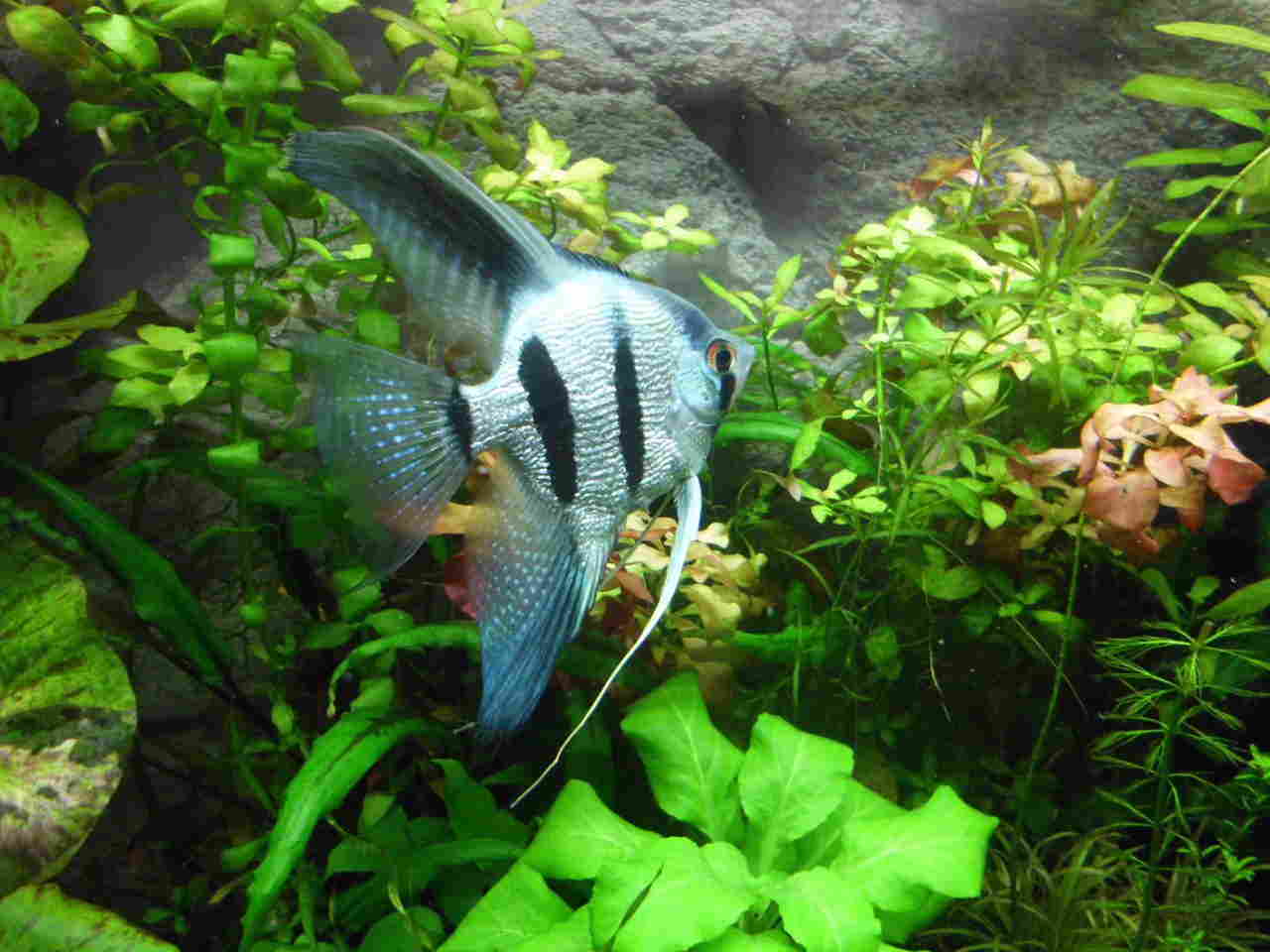
Types of angelfish
Altum
Pterophyllum altum or altum angelfish (Pellegrin, 1903) is about 30 cm long from their dorsal to fluke fin end. They inhabit the Orinoco River Basin and the Upper Rio Negro in South America.
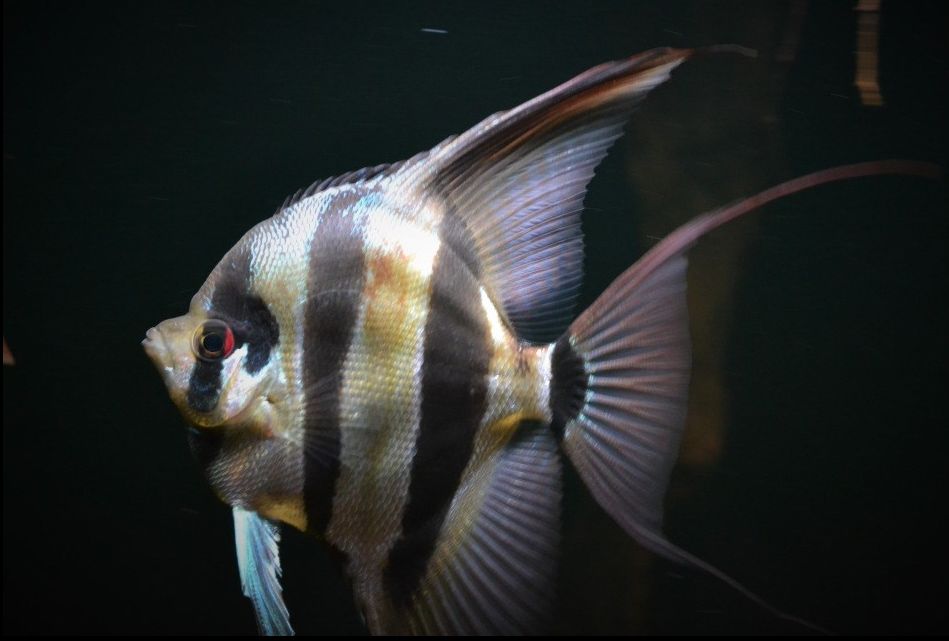
Angelfish
Pterophyllum scalare (Liechtenstein, 1823), its habitat is large and small rivers of the Amazon River basin (Peru, Colombia, and Brazil).
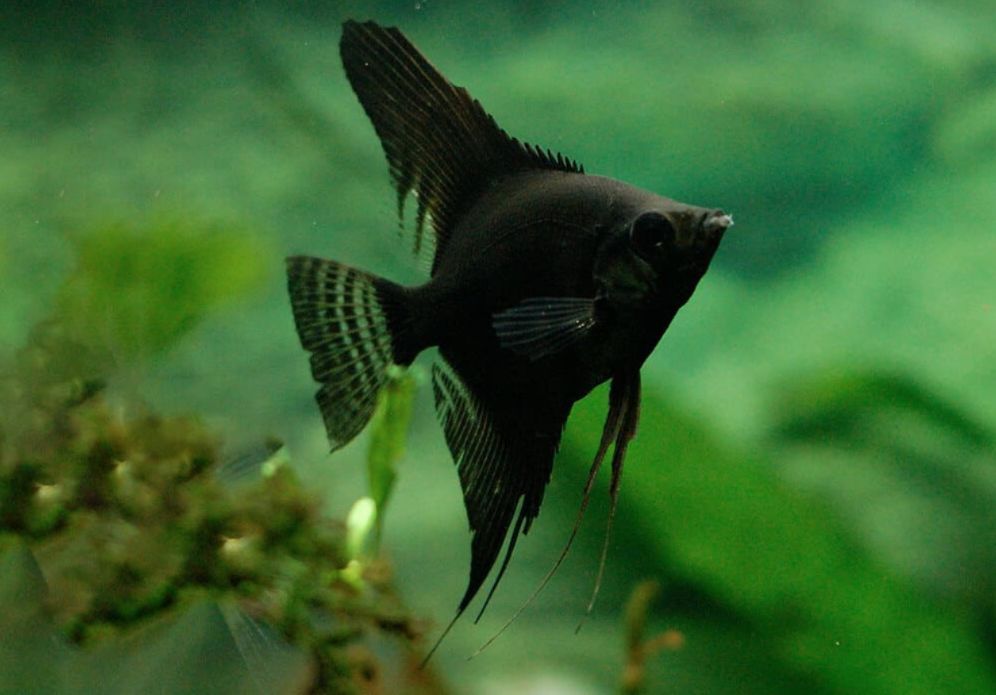
Leopold’s angelfish
Leopold’s angelfish (Pterophyllum leopoldi) is a distinctive species of freshwater angelfish native to the midstream of the Amazon River, between Manacapuru and Santarém. Smaller than its more well-known relatives, it grows to around 4 inches (10 cm) in height. Its compact body and shorter fins give it a more streamlined appearance compared to other angelfish species.
Although less common in the aquarium trade, Leopold’s angelfish is prized for its active behavior and unique look. Its more aggressive temperament, however, means it requires careful tankmate selection. Despite its smaller size, it retains the iconic elegance of the angelfish family, with its bold patterns and vibrant coloration.
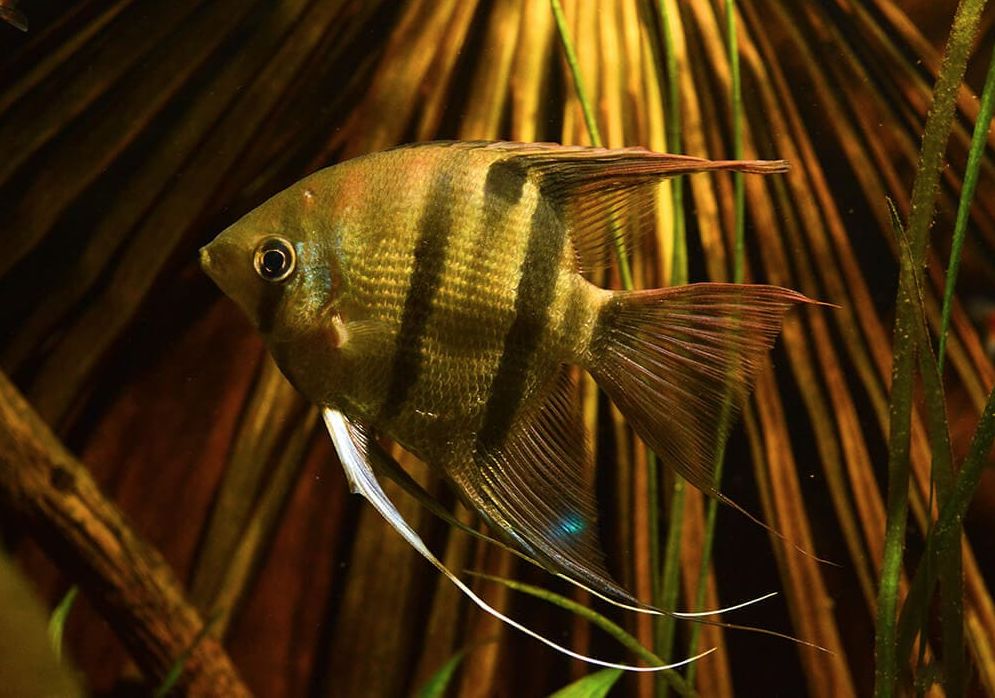
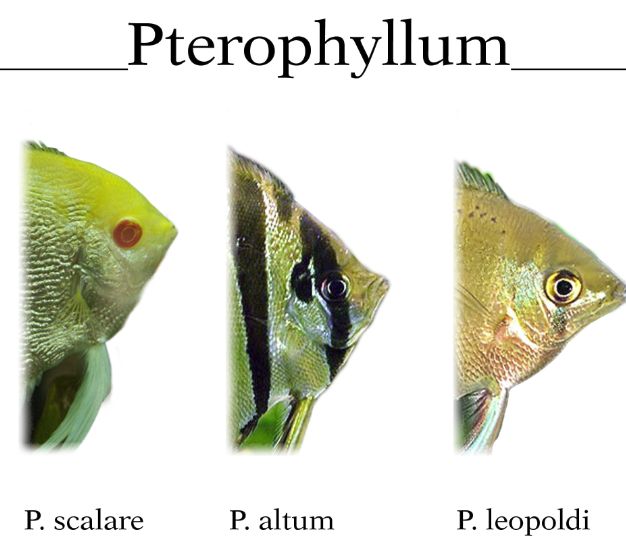
Angelfish display a wide range of coloration and patterns, which can vary between individuals and different populations. Common color variations include silver, black, and white, often with contrasting stripes, spots, or marbling. There are also angelfish with more specialized color variants, such as the veiltail variety with long, flowing fins and the marble variety with intricate patterns.
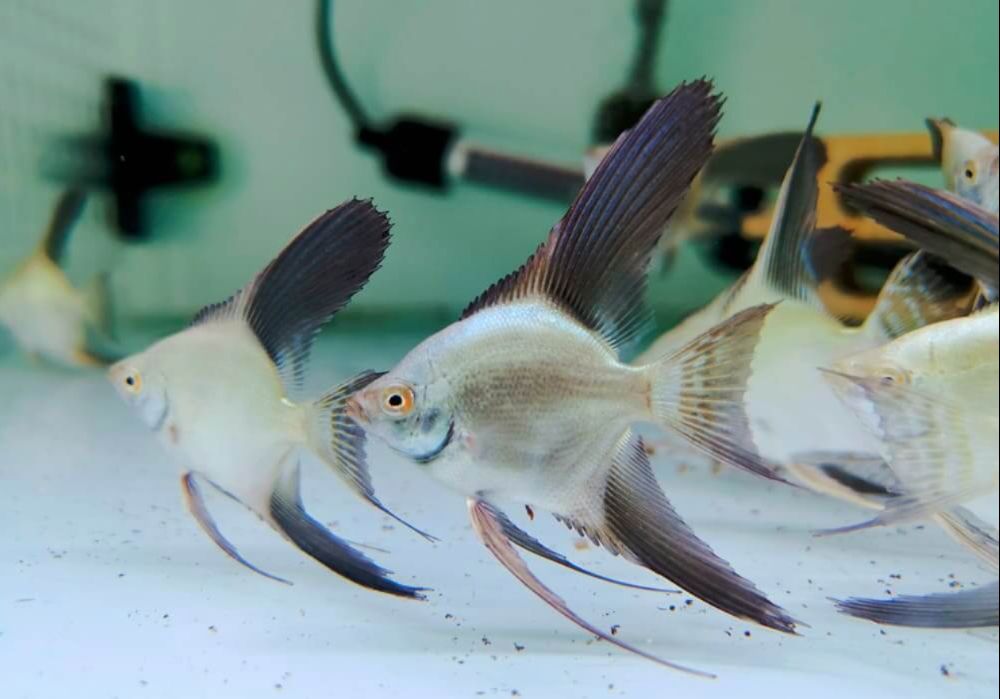
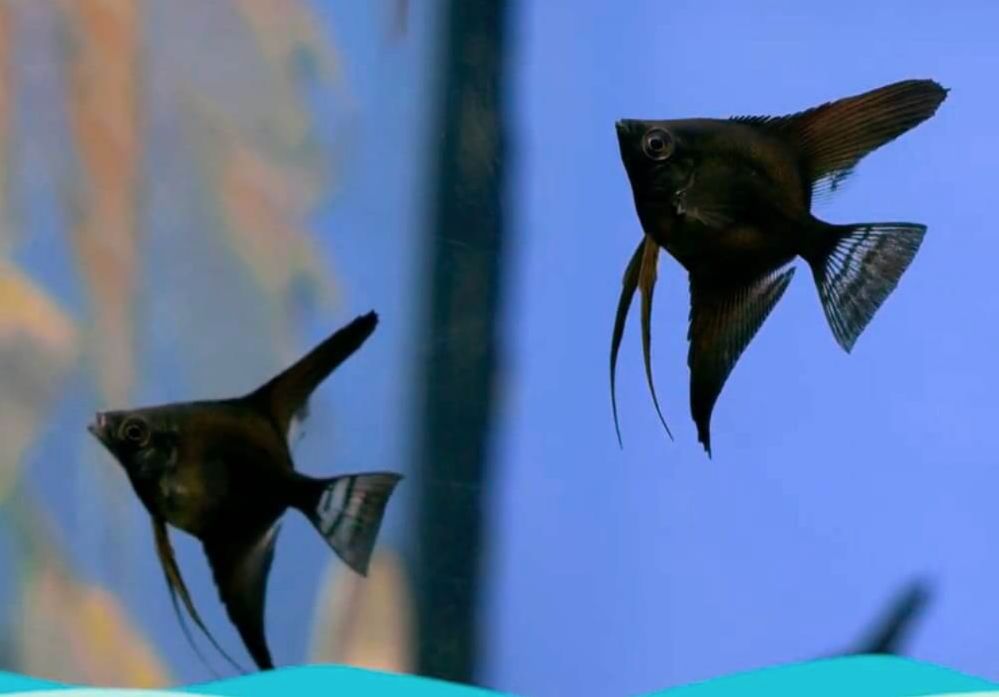
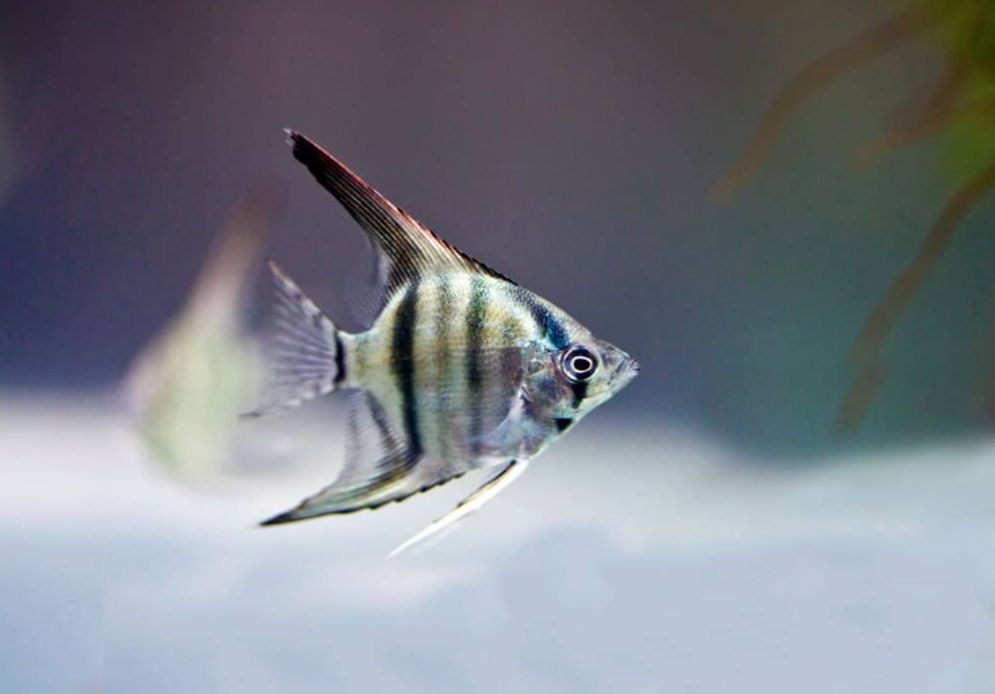
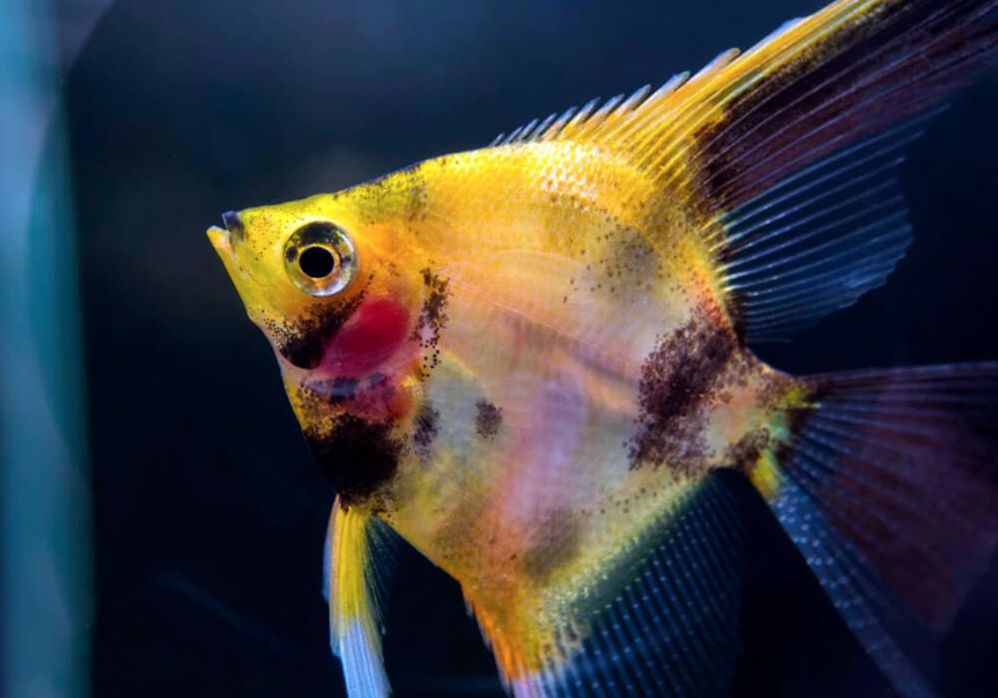
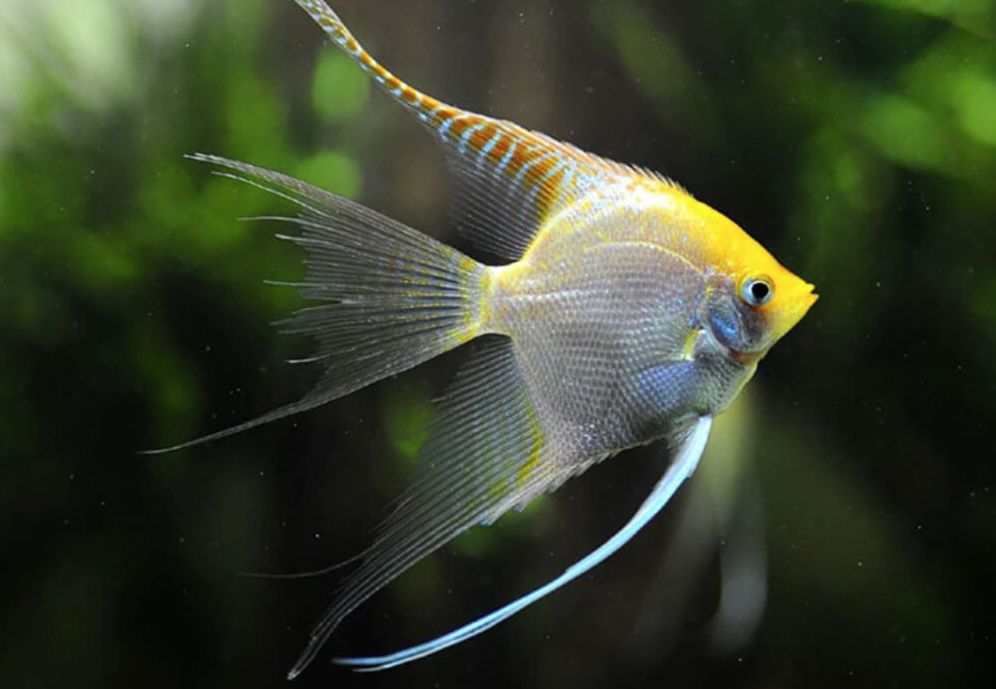
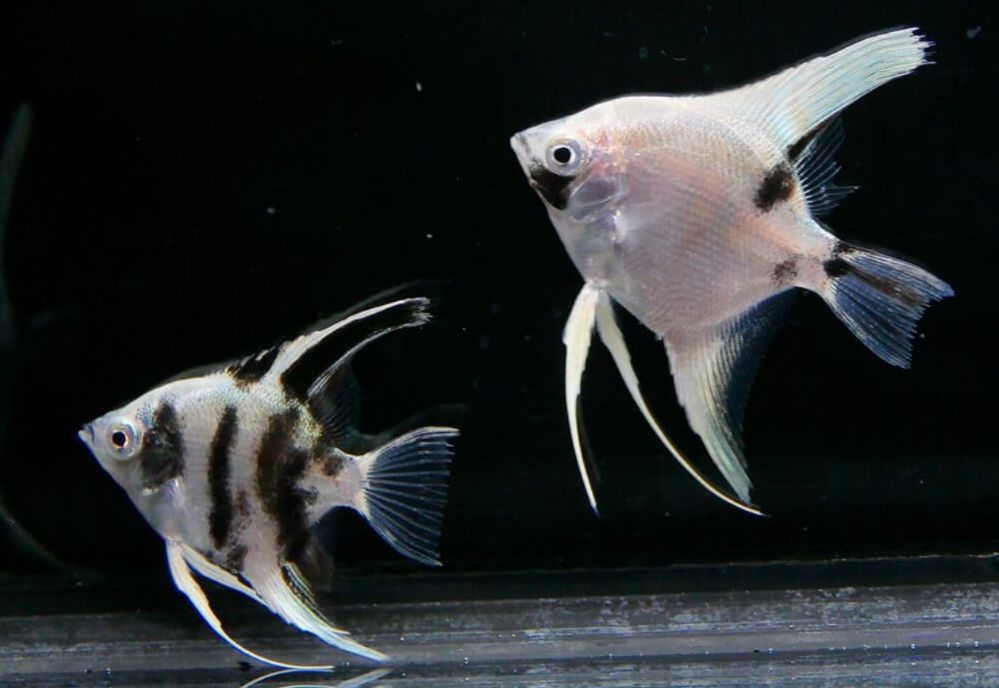
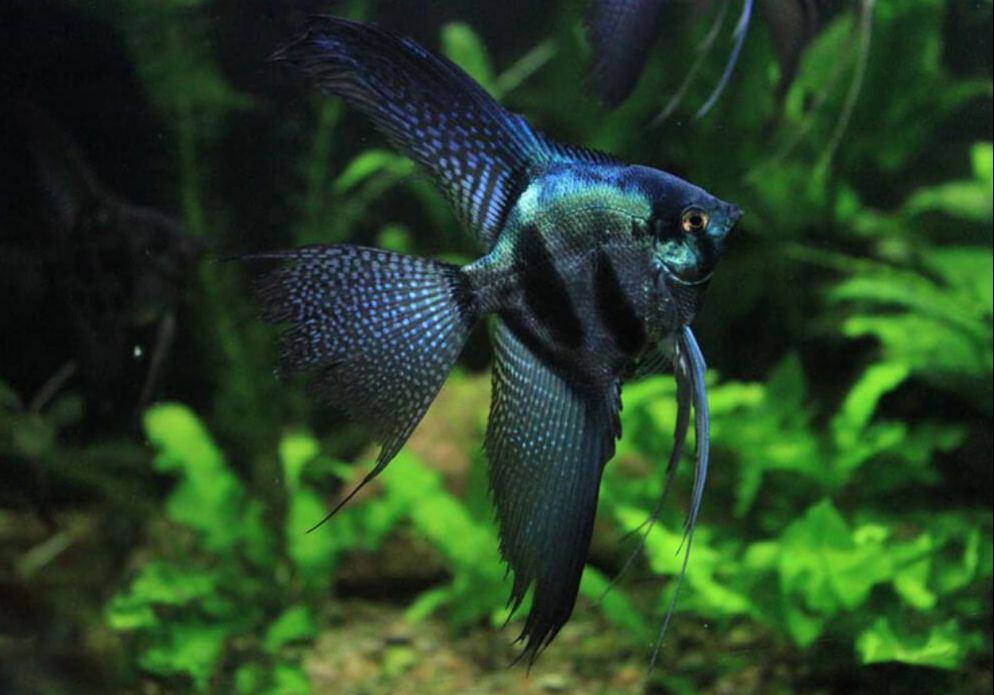
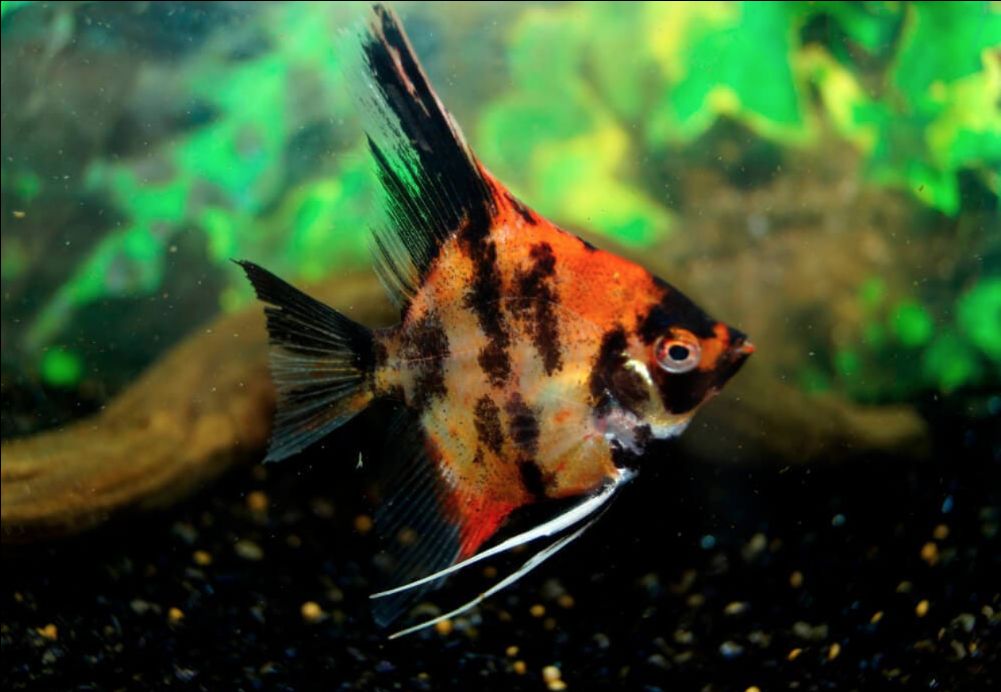
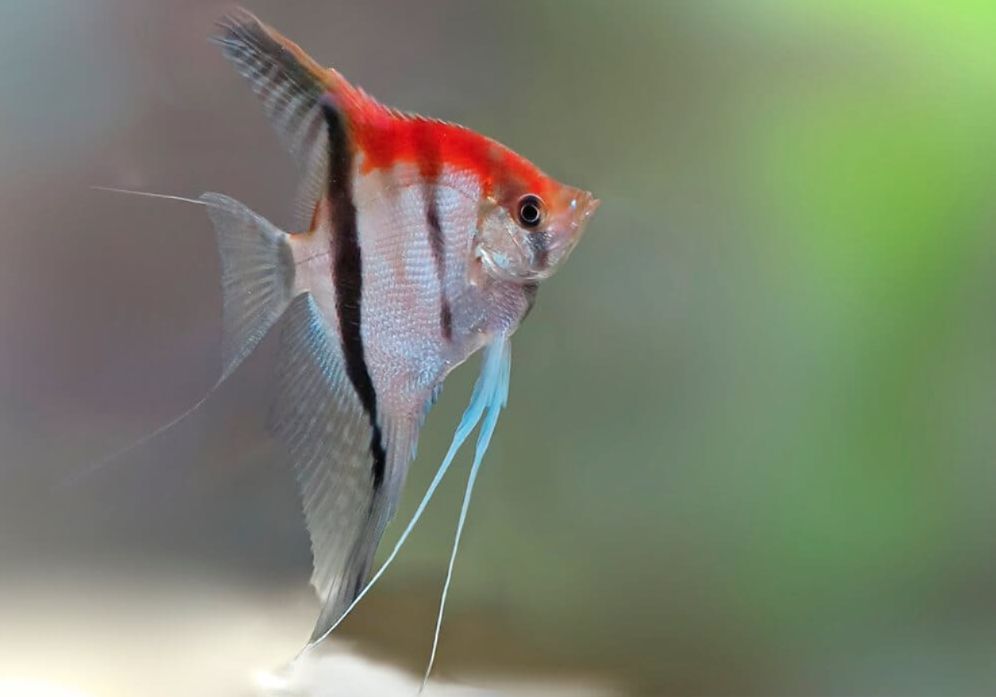
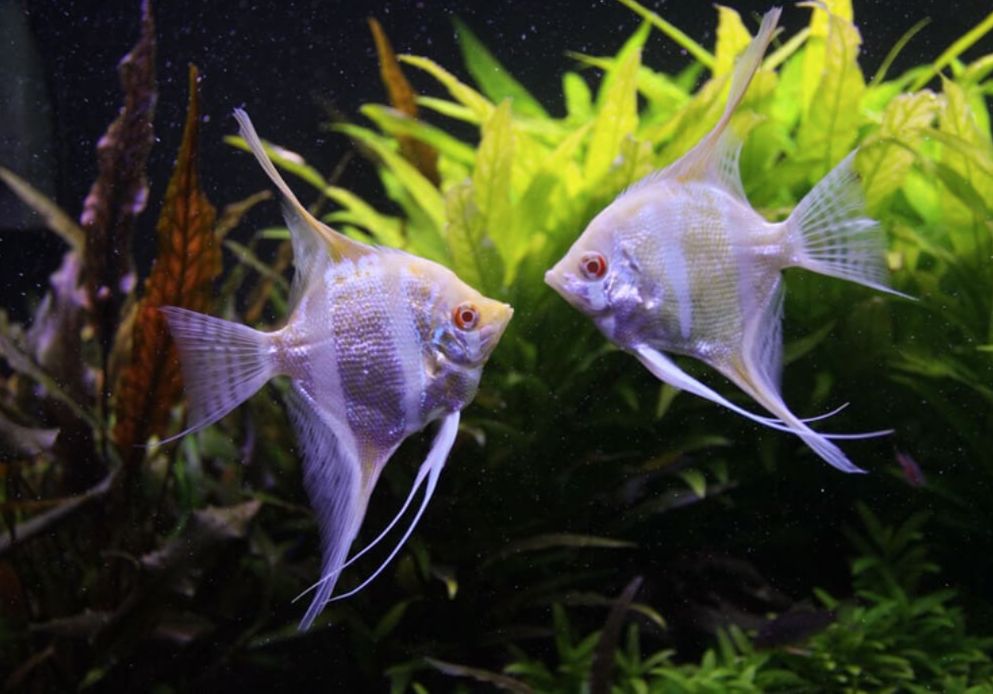
Difficulties in keeping
The fish is of medium difficulty in care. However, it can’t be recommended to beginners since it requires a tank of a rather large capacity, stable water parameters, and they may show aggressiveness towards some small fish. They can be kept in community tanks, but don’t forget that this is still a cichlid fish, and it’s not desirable to keep it together with some small fish.
Although angelfish may suffer from other fish attacks – tiger barbs and black tetras may nip the fish fins all the time.
Care and keeping in a tank
It’s better to keep them in a school of 6-10 species. You can see some hierarchy in it. Larger species get the best places in the tank, but at that, you can add some new species to it.
The record shows that adult species treat them well. In general, the more fish is in the school, the less intraspecific aggression they demonstrate. If there are more than 10 species in the group, the dominating species’ attention will be scattered, and the weakest ones will get less attention, correspondingly. Despite its peaceful temper, angelfish can demonstrate aggression towards small fishes treating them as potential prey.
However, it’s important to consider the tank size when determining the number of fish to keep. Angelfish require a tank with ample swimming space and vertical height due to their tall body shape and long fins. A minimum tank size of 44 gallons (200 liters) is generally recommended for a small group.
Tank setup
Angelfish are very timid by nature. Any abrupt movements near their tank, turning lights on/off, loud sounds may scare the fish, and they react to these by sharp movements in different directions. As a result, they may get injured when hitting tank decorations and walls. The tank may have any decorations but without sharp edges, which may harm the fish.
Plants
Despite that, many sources mention complete compatibility between angelfish and tank plants, this isn’t so. Adult species eagerly plough up from the fast-growing substrate plants with the weak root system (for example, Hemianthus micranthemoides). If this happens, add some fish food containing spirulina into the fish diet.
In a tank you should keep plants with a strong root system, for example, echinodorus. The plants should have large wide leaves since the fish likes to lay its eggs on these. The desirable length of light is from 7 to 10 hours.
Water parameters
In the wild, angelfish thrive in slightly acidic, soft water. However, modern angelfish have become more adaptable to a variety of tank conditions. They are now less demanding than before, tolerating a wider range of temperatures and water chemistries.
As a tropical freshwater species, maintaining the right water temperature is crucial for their health. Ideally, the water should be kept between 26 to 30°C (75 to 86°F), with a hardness of 3 to 10 °dH and a pH between 6.0 and 7.0. It’s also important to keep nitrate levels below 100 mg/l.
While angelfish can withstand brief drops in temperature to 18-20°C, it’s best not to rely on this tolerance frequently, as consistent optimal conditions are key to their well-being.
Tank size
Due to its body shape, it’s desirable to keep angelfish in a tank not less than 44 gal (200 liters) large. However, if you plan to keep several fish, it’s better to get a tank of 400 liters capacity. Another advantage of a large tank is that when fish spawn, they feel safer and don’t eat their eggs that often. Besides, this is a tall fish, and the tank walls should be high enough for it. The minimum water column height in a tank should be 16 in (40 cm).
Filtration
Water filtration and aeration, as well as weekly tank bottom cleaning with partial water renew, is a must. Angelfish body isn’t made for swimming in high-flow waters, so the tank filtration should be quite moderate. Strong water flow makes the angelfish feel stressed and slows down their growth since they spend their energy fighting with the flow. Weekly water renew is obligatory (about 20% of the total tank capacity).
Feeding
The fish prefers feeding close to the water surface, but it can also take food in the middle water layer or pick it up from the bottom.
It is omnivorous, and in a tank, it eats all the types of feed: live, frozen and artificial. The basis of their diet may include qualitative flakes, and live or frozen feed (tubifex, blood worm, brine shrimp, corethra) may be given as an addition to the main diet.
It’s important to keep in mind two main things about this fish – it is a gluttonous one, so you mustn’t overfeed it no matter what.
Also, be careful when feeding the fish with bloodworm, or you may even exclude it from the diet since if the angelfish has eaten just a bit more of blood worms than it should, it’ll have very bad flatulence. It’s much safer to feed the fish with some brand feed of high quality.
It’s more important to keep the balance of fiber and protein in the diet. In the wild, most species’ feed includes 50% to 85% of fibers from the total food weight. However, only a few fish food manufacturers take this peculiarity into account when creating their products.
Some manufacturers use raw plant food additions to keep the fish coloring intensity and their health. It’s easy to meet the need for fresh plant components in the fish diet by adding lettuce and spinach. Also, you may feed the angelfish with small pieces of new zucchini or any other squash. Spray these vegetables with boiling water and blanch for some time, then cool them before giving them to it.
Tank mates
Angelfish may be kept in a community tank. However, you should keep in mind that it’s still a cichlid fish, and it may be aggressive towards other smaller fish. It becomes especially aggressive during spawning when warding off intruders from the nest.
The same may happen to the fish juveniles and shrimps – they may become angelfish feed. The fish stick together while they are young, but the adult fish form couples and become rather territory-dependent after this. The fish is a bit timid, and it may get scared of unexpected moves, sounds and lights turned on suddenly.
So who can be a perfect angelfish tank mate?
The answer is – quite a variety of large and middle-sized fish. You should avoid completely small-sized fish like celestial pearl danio. Angelfish can be kept together with live-bearing fish (but angelfish eating guppy fry): platy, mollies, swordtail, and guppies (except Endler’s guppy). Keep in mind that you won’t see any of their fry.
| Tank Mates for Angelfish | Approximate Size |
|---|---|
| Harlequin Rasboras | Small (1-2 inches) |
| Cardinal Tetras | Small (1-2 inches) |
| German Blue Rams | Small-Medium |
| Kuhli Loaches | Small |
| Dwarf Gouramis | Small-Medium |
| Honey Gouramis | Small-Medium |
| Bristlenose Plecos | Small-Medium |
| Clown Loach | Medium-Big |
| Zebra Danios | Small |
| Cherry Barbs | Small |
| Black Neon Tetras | Small (1-2 inches) |
| Bolivian Rams | Small-Medium |
| Glowlight Tetras | Small (1-2 inches) |
| Rummy Nose Tetras | Small (1-2 inches) |
| Pearl Gouramis | Medium |
| Keyhole Cichlids | Medium |
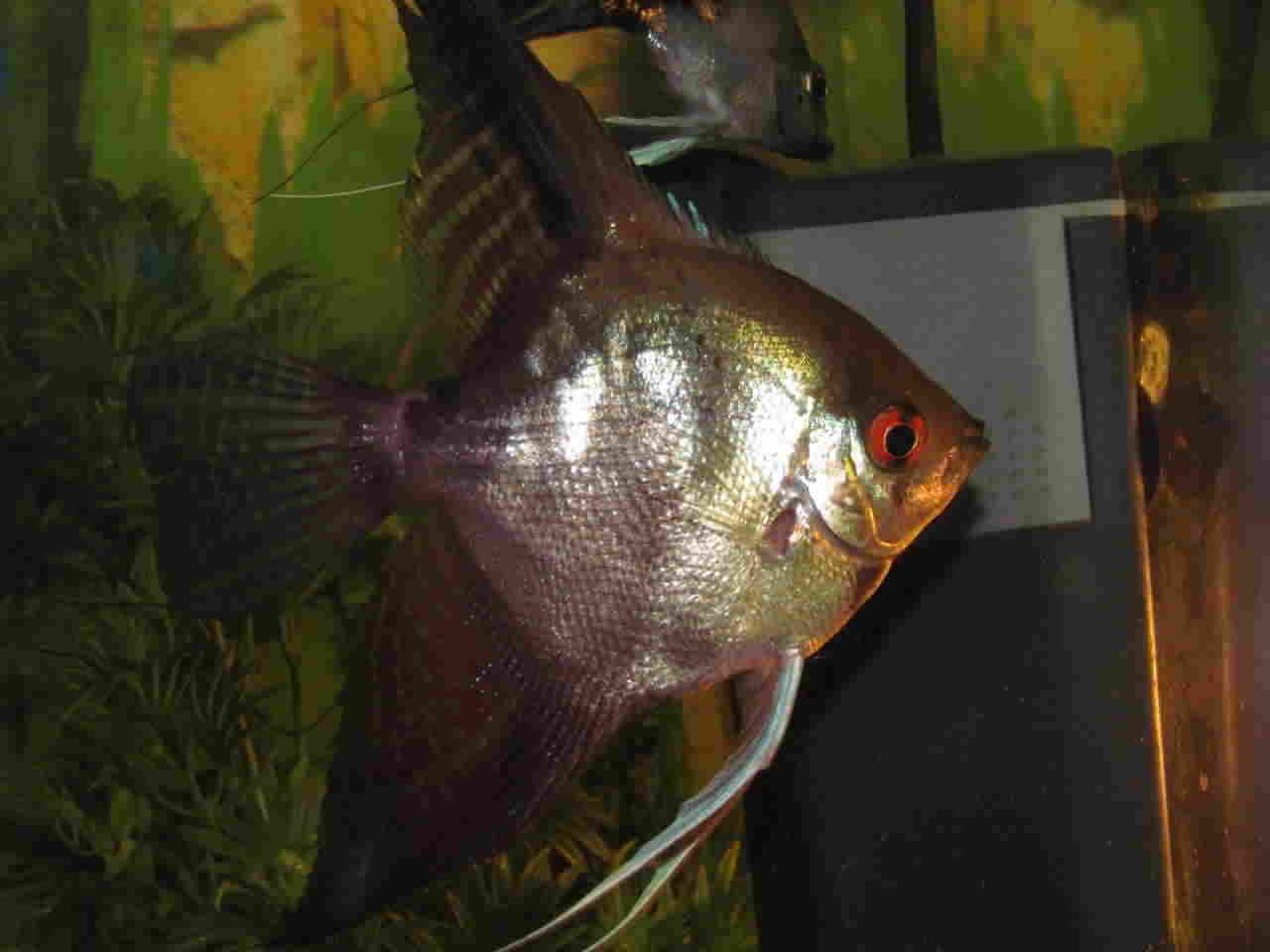
Gender differences: male vs female
It’s impossible to see between male and female before they become reproductive, and even then, you can be sure that it’s a male or female only during their spawning period. There are some indirect indicators, like – the male is larger, and it has a larger forehead, but still, it doesn’t guarantee anything. At the age of 10-12 months, you can recognize a male by his forehead. It becomes steeper than that of the female. This feature is also peculiar to other cichlid kind males. The female fish anus is bulging.
However, in general, all these characters are quite relative and individual. They become visible only during the second year of the angelfish life, and they don’t give a 100% guarantee of precise definition.
You can see if the fish is ready for spawning by the sharpened-shaped spermoduct appearance on the male’s body, while a short and wide terebra that looks like a small tube becomes visible on the female’s body.
Breeding
Forming a Pair
Angelfish are known for forming stable breeding pairs. To ensure you acquire a compatible pair, it’s best to start with a group of six or more angelfishes. This approach allows them to naturally select their mates. Often, you may only realize that spawning is underway when you see a cluster of eggs in one corner of the tank while the other fish are grouped in another area. Watch for signs of a pair preparing to spawn: they will stick together, defend their chosen spot, and exhibit protective behaviors.
Preparing for Breeding
Attention to diet is crucial when preparing angelfish for breeding. Overfeeding can lead to obesity, which in turn affects fertility. Both males and females are equally susceptible to this issue. Ensure that they receive a balanced diet to maintain their reproductive health.
Setting Up the Spawning Tank
A clean, bare-bottomed spawning tank is ideal for angelfish breeding. Use an artificial plastic leaf or similar surface for egg-laying, positioned at a 45-degree angle to the tank walls. Prepare the water by mixing filtered water with tank water in a 2:1 ratio. Maintain water hardness below 8 dGH and a pH level between 6.5 and 7.0. Increase the water temperature to 79-82ºF (26-28°C) to stimulate spawning and provide intense aeration.
Breeding Behavior
Once the angelfish are ready to spawn, they will actively search for a suitable site, such as a plant leaf, plastic plate, or tank glass. The pair will clean the chosen surface thoroughly and guard it against intruders. This preparation can take 2 to 5 days.
When spawning begins, the female lays eggs in rows or randomly on the prepared surface, and the male fertilizes them. The pair will lay approximately 500 to 600 eggs. After spawning, the pair will care for the eggs by fanning them with their pectoral fins and removing any unfertilized, white eggs.
Commercial Breeding Practices
In commercial settings, breeders or the plate with eggs are often removed from the spawning tank. To prevent fungal infections, add an anti-fungal solution like methylene blue to the water. Use a thin pipette to remove dead eggs daily and place a sprayer under the substrate to provide constant, slow water flow around the eggs.
Challenges and Care
Despite modern breeding practices improving productivity, many breeders lose their parental instincts. As a result, it’s rare to find a breeding pair that will fully care for their offspring. Angelfish larvae have a unique outgrowth on their heads that helps them attach to surfaces. They start swimming after 5 to 9 days, depending on water temperature. Higher temperatures speed up development, but cooler temperatures result in stronger, more resilient juveniles.
Post-Hatching Care
Once the juveniles begin to swim, they should be fed infusorians. As they grow, transition them to larger foods. Feed them several times a day in small portions to support their rapid growth.
Additional Tips
Angelfish typically become reproductive between 6 to 12 months of age. They are also sensitive to medications. If illness occurs, raise the tank temperature to 32-35°C to help the fish recover, as they tolerate this range better than pathogens do.